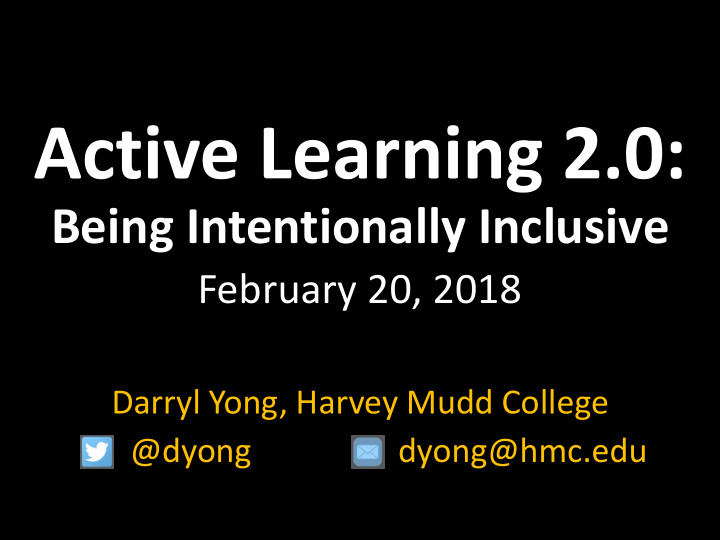



Being Intentionally Inclusive February 20, 2018 Darryl Yong, Harvey Mudd College @dyong dyong@hmc.edu
Active learning is wonderful, but let’s think critically to be more intentionally inclusive because its benefits may not automatically apply to all students. Let’s ask ourselves: 1. Who is likely to benefit? Who might not? 2. Who might feel included or excluded? 3. How would I know if I need to intervene?
Journal for Research in Mathematics Education, July 2014
Source: https://commons.wikimedia.org/wiki/File:MaslowsHierarchyOfNeeds.svg Emotional & Intellectual Safety Belonging to group, classroom, school Self-concept as learners of mathematics Maslow’s Hierarchy of Needs (1943)
General Strategies to ↑ Inclusivity 1. Establish and maintain norms for participation 2. Attend to classroom climate 3. Be transparent about instructional choices
Group-Worthy Tasks 1. are open-ended and require complex problem solving 2. have multiple entry points and ways to show competence 3. involve intellectually important content 4. require positive interdependence and individual accountability 5. have clear criteria for the evaluation of the group’s product Lotan, Rachel A. "Group-worthy tasks." Educational Leadership 60.6 (2003): 72-75
How to Form Groups? Group size Durability of group assignments Process used for group composition • Student selected • Instructor selected (e.g. homogeneous or heterogeneous ability) • Random assignment (visibly random or not)
Recommend
More recommend